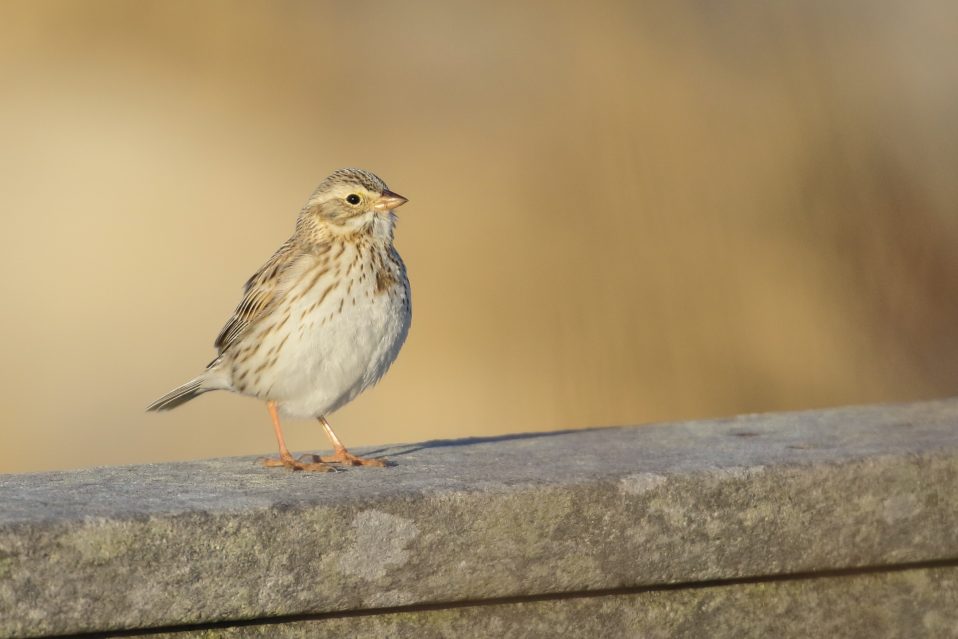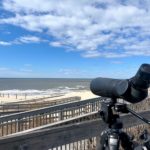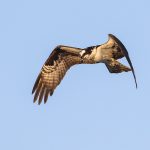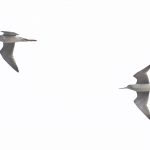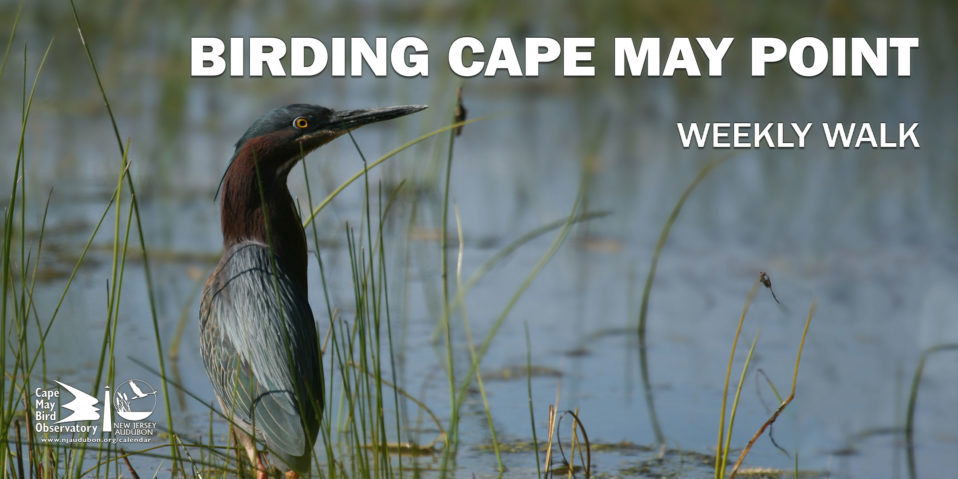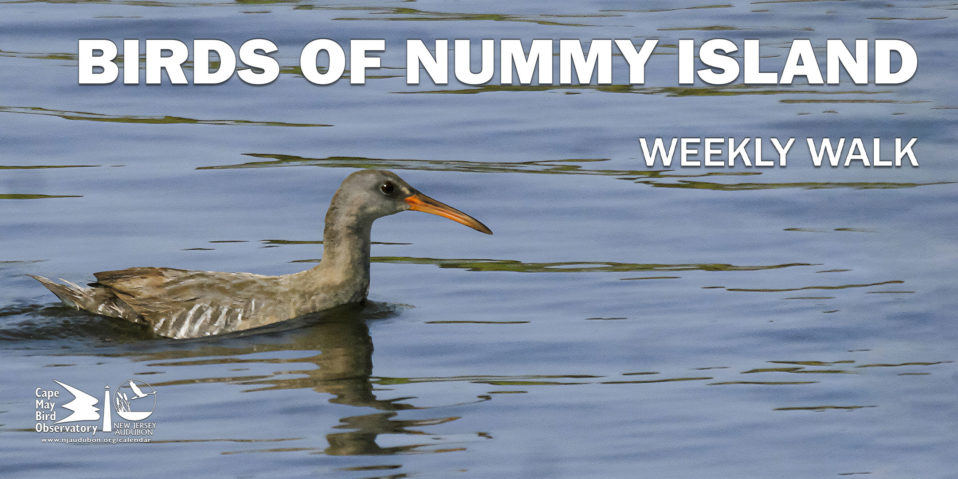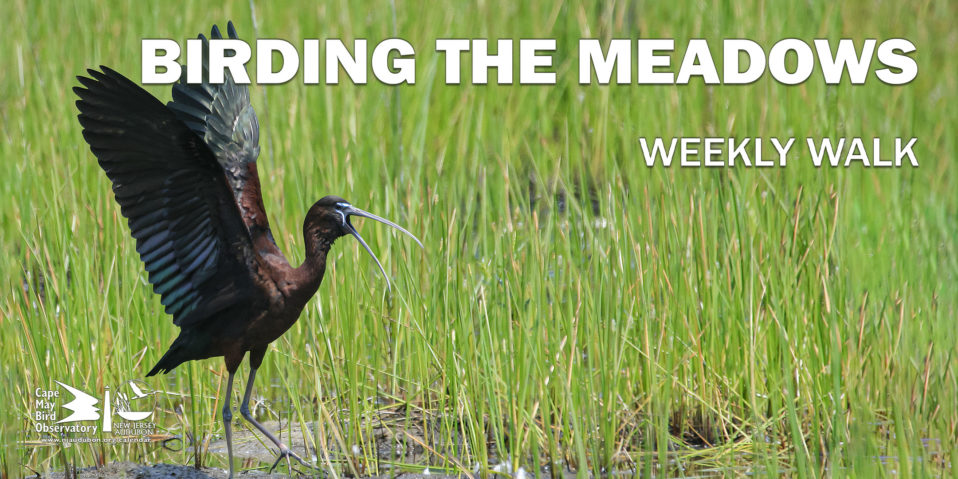[An Ipswich Savannah Sparrow stops by the Cape May Springwatch. Photo © Tom Reed.]
By Tom Reed
Introduction
Spring greetings from Cape May! The 2021 Cape May Springwatch season commenced Monday, March 1, and daily migration monitoring will continue at Cape May Point through the last day of May.
We are once again extremely grateful to collaborators Larry & Judy Winne, whose support again makes the work we do possible. CMBO is also appreciative of continued partnerships with data entry provider Trektellen, which offers unparalleled solutions for migration count projects, and the Borough of Cape May Point, which allows us access to the count site at Coral Avenue. I will again coordinate field operations this season with assistance from Julian Grudens, this year’s Springwatch Technician. Julian arrives at Cape May with a wealth of experience from research projects across the continent, including two field seasons at Long Point Bird Observatory, a partner in our International Friendship Agreement.
Folks who are familiar with the Springwatch program may again notice our continued attempts to monitor grounded migrants at Cape May Point this season. These efforts, first introduced in 2020, were swiftly taken away by Covid-related shutdowns – but that only means that we’ve had plenty of time to refine our methods! We will use the data gleaned from these exploratory, additional surveys to compare and contrast with totals accrued from the visible migration count at Coral Ave, all with an eye toward generating a more comprehensive and well-rounded picture of how spring migration unfolds here at land’s end.
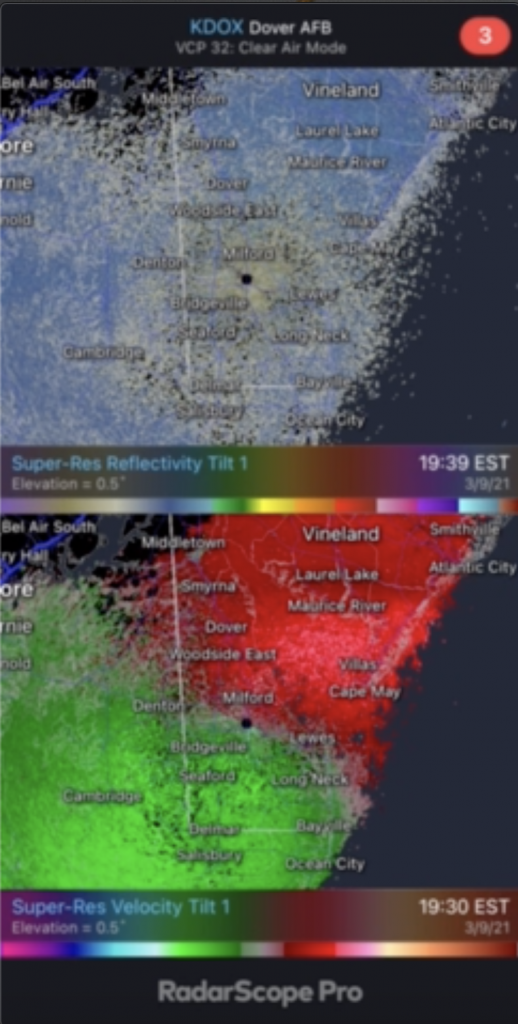
NEXRAD radar depicts birds migrating over the Cape May region during the evening of March 9th. Image courtesy of RadarScope Pro.
Summary
The season opened with steady rain on the morning of the 1st, and while very few migrants were recorded, the day’s list included a few arriving Wood Ducks, American Oystercatchers, and Killdeer. At least 18 Wood Ducks were noted at Cape May Point State Park, indicating that some waterbirds were indeed on the move in the soupy conditions. The rain preceded the passage of a strong cold front that would bring cold and windy conditions on the 2nd and a continued suppression of obvious movement, save for a few raptors, gulls, and blackbirds. The month’s first dose of southerly winds brought with it 1,000+ Canada Geese on the 3rd and continued mild air ushered in the first Piping Plovers on the 4th, along with a fair movement of American Robins (3800+) and the first obvious arrival of Pine Warblers (7). The notorious March weather roller-coaster took another dip from the 5th through the 8th, with sunrise temperatures at or below the freezing mark on each of these four days; expectedly, migration again took a few days off. A return of the southerlies on the 9th resulted in (by Cape May spring standards) an excellent goose flight, with 4,000+ Canada and 5 Cackling geese recorded. A Razorbill and 9 more Pine Warblers rounded out the period on the 10th. The morning census at Cape May Point State Park recorded 44-54 species each day and 82 species through the period; census highlights are included below.
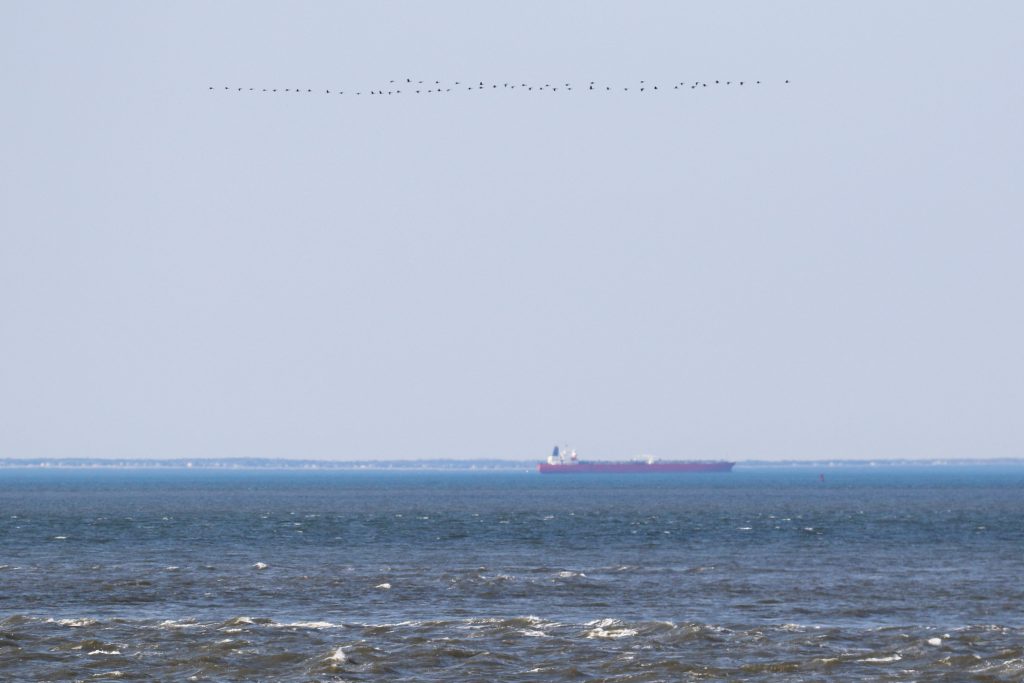
Canada Geese migrating north over Delaware Bay on March 9th, as seen from the dune crossover at Coral Avenue, Cape May Point. Photo © Tom Reed.
Notable Species
The following rare, unseasonable, or otherwise interesting species were reported within the Springwatch recording area during the past week:
Cackling Goose: generally a rare migrant locally, we have come to expect one (or a few) during the strongest early-spring goose flights in recent years. Such was the case on the 9th, when a total of 5 were detected migrating past with flocks of Canada Geese.
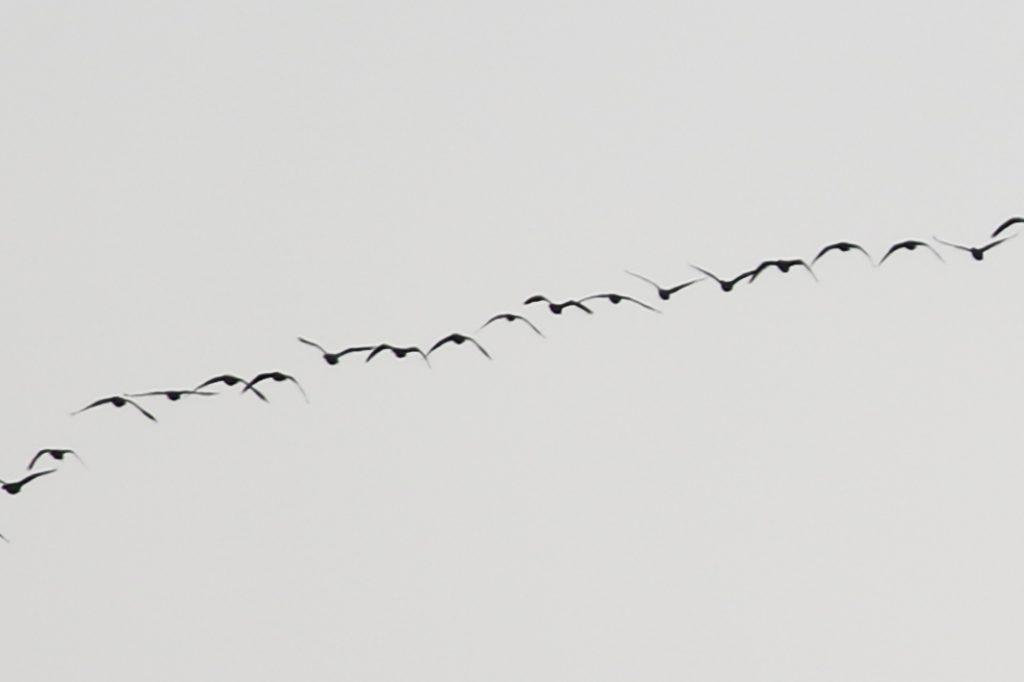
Cackling Goose (center) with flock of Canada Geese on March 9th. Photo © Tom Reed.
Piping Plover: our first, and apparently New Jersey’s first of the season, flew west past the Coral Ave watchsite on the 4th. According to eBird, others arrived on Long Island, NY, and along the New Hampshire coast the same day. We regularly record small numbers of this species in the spring (generally 15-25 counted at Coral Ave), with active migrants generally moving along the beach or just offshore as singles or in small groups between early March and mid-April. An additional individual flew past Coral Ave on the 10th. From 2017-2021, the first Springwatch Piping Plover has been recorded between March 4th and March 9th each year.
American Bittern: a wintering individual at Cape May Pt. State Park was seen a few times along the back edges of the “plover ponds.”
Common Raven: rare but increasingly regular at Cape Island, one was first detected during the morning census on the 3rd. It later appeared over the dunes near Coral Ave before making a turn to the southwest and flying over the bay for a few miles, eventually turning back toward land!
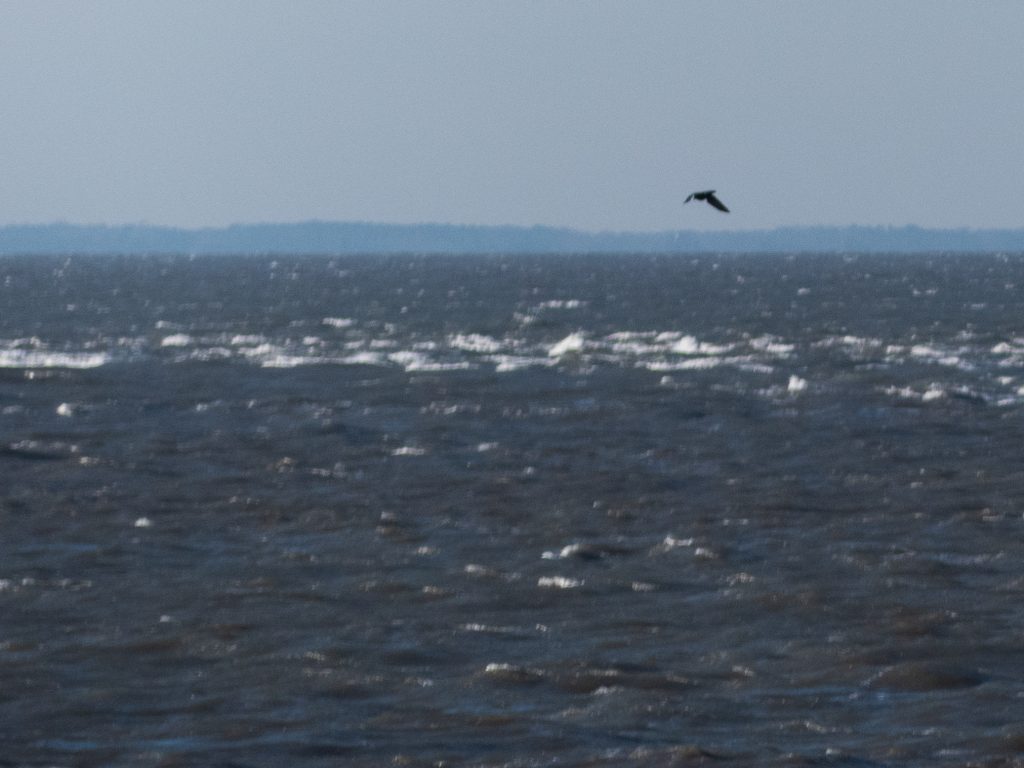
Not your typical Cape May scene: Common Raven headed out over Delaware Bay on March 3rd. Photo © Julian Grudens.
Orange-crowned Warbler: at least three wintering birds continued to persist at Cape May Pt. State Park through the period.
Pine Warbler: the season’s first was noted on the 3rd, with several more seen on subsequent warmer mornings. All seen well have been adult males, as we would expect to see during early March.
——————————————————————————————————————————-
Thanks for reading, and we hope to see you in Cape May this spring! The migration count at Coral Ave starts at sunrise every day and continues for at least four hours; visitors are welcome but must wear face masks and adhere to social distancing requirements. To learn more about the Cape May Springwatch (and to view daily migration count totals), head over to our Springwatch information page.
Written by Tom Reed.




